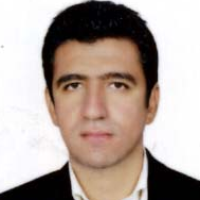Evaluating the effect of the spiritual symbol of natural light in places of worship (mosque) on the spiritual resilience of users through the mediating role of spiritual intelligence; a case study of mosques in the Qajar period of Shiraz
Spiritual resilience is one of the most important and fundamental determinants of people's health. Spiritual resilience causes people to use their existing capacities to achieve success and growth of individual life in difficult situations and despite the risk factors, and use these challenges as an opportunity to empower and improve their quality of life. The aim of this study was to evaluate the effect of natural light spiritual symbol in ebadi space (mosque) on users' spiritual resilience through the mediat role of spiritual intelligence. The method of this study is descriptive and correlational. The statistical population of this study consisted of all worshippers from 10 selected mosques of Qajar period mosques in Shiraz city who were selected by simple random sampling method using Cochran formula (171 persons). In this study, three questionnaires of spiritual symbolism, spiritual intelligence and resilience were used as research tools with reliability coefficients of 0.86, 0.89 and 0.83, respectively. Data were analyzed using correlation coefficient and multiple regression in SPSS software. The results showed that there is a positive relationship between spiritual symbolism and spiritual resilience and variables of spiritual symbolism and spiritual intelligence can predict spiritual resilience. Also, among the spiritual symbols of mosques, the symbol of "light" has a greater role in explaining spiritual intelligence. According to the results of this study, spiritual symbolization, especially with natural light in worship spaces, while activating the conscious part of the mind, is effective in the function of spiritual intelligence and provides the necessary platform for creating spiritual resilience.
-
Evaluation of the energy demand in the building by using a sunspace in combination with solar chimney
Hamid Eskandari, Yaghob Peyvastegar *, Aliakbar Heidari
Journal of Urban Management and Energy Sustainability, Summer 2023 -
A Comparative Investigation of Physical-Environmental Factors Affecting the Cognitive Skills of 9-12-years-old Children (Case Studies: [Primary] Schools of Shiraz University of Medical Sciences and Shiraz University)
Marziyeh Shahroudi-Kolour, Ali-Akbar Heidari *
Journal of Architect, Urban Design & Urban Planning, -
Changing the Sustainable Perspective from Outcome to Process; the Experience of Designing Urban Spaces based on Social Participation in Shiraz
Amin Habibi *, Mohammad Nikkar, Mohammad Aliabadi, Sedigheh Eskandarpour
Bagh-e Nazar, -
Meaning Transfer Analysis and Ranking the Types of Usage in Urban Space According to the Parameters of Urban Planning
Marjan Mohsenzadeh *, MohammadAli abadi, Javid Ghanbari, MohammadHosein Zakeri
Research and Urban Planning, -
Qualitative Concept Elucidation of the Word “light” from Quran Text and Transferring It to the Devotional Space Body
, Mohammad Aliabadi*, Hosein Kalantari Khalilabad
Maremat & memari-e Iran, -
Interpretation of Islamic beliefs and thoughts implementations in masque and school architecture of Agha Bozorg Kashan
Ali Akbar J. *, Yaghoub Peivastehgar,
Architectural Thought,




